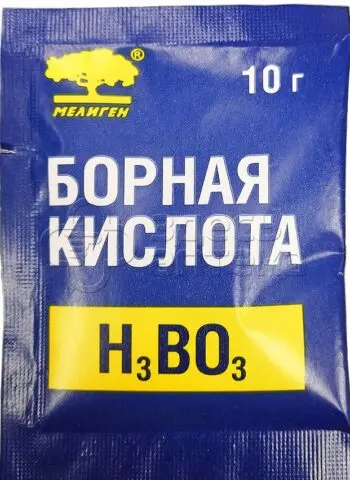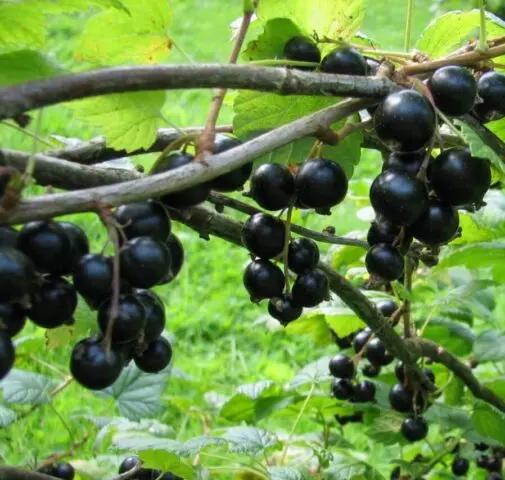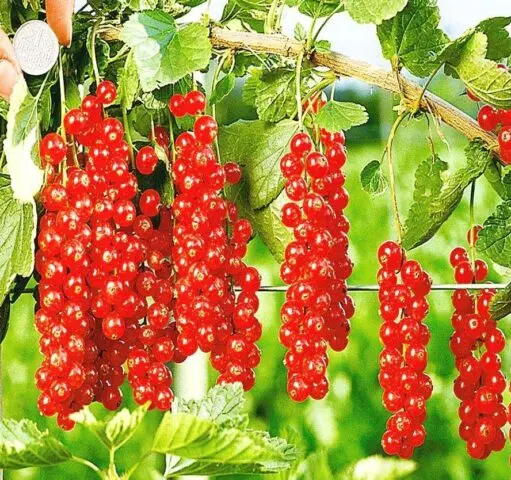Contents
Boric acid for currants can be used as a root, foliar top dressing, as well as for seed germination. This is a fairly effective tool that starts growth processes, contributing to the set of green mass. Also, boric acid helps to protect plantings from pests and diseases, and most importantly, it stimulates the formation of ovaries, which is especially important at the flowering stage. The solution is prepared based on a concentration of 2 g per 10 liters, but there may be other dosages – from 0,5 g to 10 g per the same volume.
How to understand that currants lack boron
Boron is required by plants in small amounts, but is a vital element. Its deficiency or complete absence leads to poor formation of ovaries and reduced yields.
Treatment of currants in the spring with boric acid may be necessary in cases where there are clear signs of a lack of this substance:
- young leaves are covered with yellow spots, especially along the veins;
- small leaf plates become less elastic, wrapped in a tube and crumble;
- the upper buds bloom more slowly, and the lateral ones faster;
- flowering is not as plentiful as in previous seasons;
- the fruits are tied poorly, the yield is lower than expected;
- the bark on the branches of the currant and the apical shoots die off.
When determining boron deficiency, several signs must be considered at once. Yellowing leaves can also indicate a lack of other elements, such as nitrogen, potassium or phosphorus.
You can determine the lack of nutrients by the following signs: the leaves become cup-shaped, small brown spots appear on the old lower foliage, which gradually increase, as a result of which the currant leaves die off.
Rules for processing currants with boric acid
Boric acid can be bought at a pharmacy without a prescription or in stores for summer residents. It is sold as a powder or tablet (chemical formula H3BO3).. It is most convenient to work with powder, since it contains only a pure substance without impurities. It is easier to dissolve in water than a tablet that has to be crushed beforehand.

Boric acid is available in powder form.
The established norm of 2-2,5 g per 10 liters must be observed especially carefully. To do this, you will need sufficiently accurate scales or you can purchase a pre-measured mass, packaged in bags. The solution is prepared in hot water, after which it is brought to a total volume with a liquid at room temperature and allowed to cool.
The treatment of currants with boric acid is carried out in several stages:
- seed dressing;
- blooming buds;
- 5-7 days after that, when the bushes are just starting to form ovaries.
When processing, seedlings are sprayed completely, trying to cover as many leaves as possible. You need to work early in the morning or late in the evening. In this case, the weather should be dry and calm – otherwise the rain will wash away the remnants of the solution.
When watering under the root, the soil is preliminarily cleaned of weeds, and then water is poured onto the near-stem circle – no more than 5 liters per bush. If you need to pickle blackcurrant seeds before planting seedlings, it is enough to prepare a small volume and keep the planting material in it for a day.
What diseases and pests helps
Boric acid gives quite a lot of positive effects for black, red and other varieties of currants. It stimulates the set of green mass, increases the germination of seeds, promotes the formation of ovaries, and also improves the taste of the berries themselves. Also, the benefits of using the solution are associated with the prevention of dangerous bacterial and fungal diseases of the plant:
- gray rot;
- bacteriosis;
- brown rot.
Boric acid helps to get rid of ants, which contribute to the development of aphids, which is also dangerous for currants. However, it can only be considered as an additional means of prevention and treatment.
When signs of fungal, bacterial infections appear, it is necessary to treat the bushes with fungicides, and special insecticides and folk remedies help well against aphids.

Boric acid helps protect currants from diseases and pests
Instructions for use
The standard concentration of boric acid solution, which is used to treat blackcurrants in spring and at other times of the year, is 2 g of pure substance per 10 liters of water. Preparing the mixture is quite simple:
- Heat water to 60-70 degrees (do not use boiling water).
- Measure the required amount (2-2,5 g) and dissolve first in a small volume of water (eg 1 liter).
- Mix thoroughly and bring to 10 liters. You can take water at room temperature.
- Mix again, pour into a spray bottle and start processing currants.
Ways to use boric acid for currants
Boric acid for currants can be used in the following ways:
- Watering under the root (root dressing).
- Spraying bushes (foliar top dressing).
- Seed dressing before planting seedlings.
Each application is described in detail below.
Soil fertilization
Boric acid is used as a fertilizer when planting currants and in subsequent seasons. This is done to prevent boron deficiency for different plants. The site is watered before planting seedlings. Standard concentration – 2 g per 10 liters. This volume is enough to process 10 square meters, i.e. 1 l per 1 m2.
Before preparing the site for planting, summer residents often apply complex fertilizers. If they already contain boron, there is no need to use additional top dressing, since in this case there will be an excess of the element in the soil. In the future, watering should be given only in case of a clear lack of substance, which can be determined by the leaves, ovaries or currant buds.
Spraying
In the case of spraying, the opinions of summer residents were divided. Some gardeners offer to carry out total processing of leaves, others – only under the root. If clear signs of boron deficiency are visible on the leaves and other parts of the currant, it is better to process the entire bush. Boric acid is not dangerous (class 4 toxicity), and in moderation will not cause any harm to the plant.

Thanks to regular spraying, the yield of currants will be consistently high.
Some gardeners get a fairly concentrated solution – 10 g per 10 liters, not 2 g. There is no particular need for this – in order to prevent violations of the norm, it is better to start with small dosages. Spraying is carried out in dry and calm weather.
Root dressing
1-2 weeks after foliar application, it is necessary to irrigate with a solution of boric acid under the root of the plant. Use the standard dosage of 2 g per 10 liters. From 2 to 5 liters are poured under each bush, but no more.
seed Processing
Boric acid serves as a natural growth stimulant. It activates blackcurrant seeds, which improves their germination. Therefore, before planting on seedlings, grains can be kept in a warm (but not hot) solution of a standard concentration of 2 g per 10 liters for 24 hours. If you plan to sow a lot of seeds at once, then they can be lightly powdered with talc before planting.
Is it possible to use boric acid during flowering and fruiting
Spraying currants with boric acid is carried out not only in spring, but also in summer, and the procedure is planned twice:
- During flowering (at the initial stage).
- During the fruiting period (when the berries are poured).
This contributes to good yields, and also has a positive effect on the taste, keeping quality and transportability of berries. In both cases, foliar application is carried out by total spraying. The concentration of the solution can be reduced to 1 g per 10 liters. If other substances are added along with boric acid, it can be reduced to 0,5 g per 10 liters.
Conclusion
Boric acid for currants improves the taste of berries, makes the peel strong, improves immunity, as well as productivity due to better fruit set. The tool works well both in the case of currants and other crops. It is recommended for regular treatments. Dosages must not be violated, since an excess of fertilizer is no less dangerous than its deficiency.









